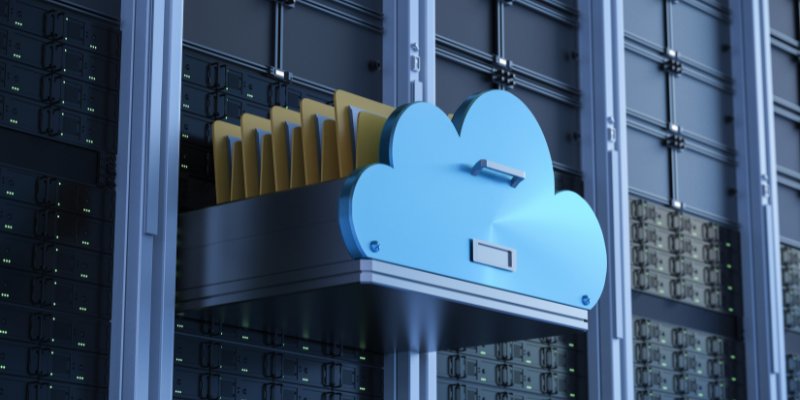
Deciphering Cloud Archive
Jan 31, 2024 By Lucy Lee
Archiving is crucial to data management and preservation across applications. Information is stored systematically for long-term accessibility and integrity. Cloud-based archiving has transformed archiving in the digital era. These creative methods have transformed how corporations protect their precious data. This detailed study examines the purpose of archiving and cloud archiving's many services, emphasizing significant stakeholders. Cloud archiving security is highlighted via a thorough comparison of cloud and tape storage choices.

What Is the Purpose of Archiving?
Data preservation and arrangement for future access, reference, and compliance is the main goal of archiving. Archiving secures vital information about an organization's history, activities, and regulations. This preservation reduces data loss and protects precious assets and information. Organizations may manage data management and preserve vital information for internal use or regulatory inspection by using effective archive techniques. Archiving optimizes storage efficiency, enabling enterprises to manage their data repositories in an organized and resource-effective way, following information governance best practices.
Archiving also ensures organizational knowledge continuity. It retrieves historical data for informed decision-making based on prior experiences and results. Since archived data is trustworthy, legal and regulatory compliance is straightforward. Archiving supports organizational resilience, knowledge retention, and regulatory compliance, not just storage.
Services Offered by Cloud Archiving:
Cloud archiving services provide a wide range of services to simplify archiving and meet enterprises' changing demands. Scalable storage solutions allow enterprises to adjust storage capacity depending on data needs. Another important service is automated data categorization, which uses complex algorithms to arrange and categorize data for effective retrieval and management.
Encryption, access limits, and security upgrades improve data security in these services. Remote teams may collaborate using cloud archiving. These services combined into cloud-based solutions simplify archiving and enable enterprises to maintain their data over long periods, adhering to contemporary data management methods.
Cloud Archiving Vendors:
Different companies are leading the way in cloud archiving, each with its own features and capabilities. These providers shape the future of cloud archiving by providing solutions for companies' requirements. AWS Glacier stands out for its safe, durable storage and optimal retrieval for seldom accessed data. Microsoft Azure Archive Storage integrates with other Azure services and offers a cost-effective archive solution. Google Cloud Storage Nearline offers low-latency access and pricing. These providers' offers allow enterprises to carefully pick solutions that meet their needs, shaping the cloud archiving landscape.
These suppliers also promote innovation and competition in the ecosystem. This competitive climate pushes providers to increase functionality, security, and scalability. These suppliers' variety allows enterprises to make educated selections depending on their particular archive requirements, highlighting the importance of cloud archiving in current data management strategies.
Cloud vs. Tape Storage:
A key part of archival strategy is choosing between cloud and tape storage, which have different benefits. Cloud storage is flexible, scalable, and accessible, allowing enterprises to react to changing data needs. Cloud storage makes it easy to scale storage capacity to meet changing demands, optimizing resource use. As data quantities rise, scalability makes it cost-effective to extend archives.
However, tape storage remains a solid archiving alternative. Durable tape storage preserves data for long durations. Its stability makes it ideal for long-term, offline data preservation, even if it is slower than cloud storage. Comparing these solutions entails considering cost, accessibility, and durability, with firms customizing their preservation approach to their data management goals.

Cloud Archiving Security:
Archiving security is crucial, especially as enterprises move to cloud solutions. To protect stored data, cloud archiving security requires analysis of encryption mechanisms, access restrictions, and compliance certifications. Leading cloud archiving services encrypt data in transit and at rest. Access controls let businesses set and maintain permissions to restrict access to sensitive archived data.
Compliance certifications verify industry standards and regulatory compliance, reassuring cloud archiving customers. Regular upgrades and audits improve security processes by tackling new threats and weaknesses. To create a safe cloud archive, enterprises must carefully assess and handle security issues. This scrutiny complements cloud archiving's flexibility and scalability with a strong security architecture, ensuring data integrity and confidentiality in the digital world.
Pros and Cons of Cloud Archival:
Pros:
Cost-effectiveness:
Cost-effective cloud archiving has transformed data management for enterprises. Archiving in the cloud reduces the need for large infrastructure expenditures. On-premises storage systems are expensive to buy and operate for traditional archive solutions. Cloud archiving, on the other hand, lets companies pay only for the storage they utilize. It reduces upfront expenditures and gives enterprises flexibility to match spending to consumption. The lack of hardware maintenance, updates, and space needs saves money over time. Thus, cloud archiving is a financially sound choice for enterprises that want strong and scalable archival solutions while optimizing budgets.
Scalability:
Cloud archiving is scalable, giving enterprises a flexible storage option. Cloud storage's ability to scale up or down depending on changing demands transforms it. Scaling typical archiving systems requires expensive and time-consuming hardware and infrastructure purchases. However, cloud archiving scales smoothly. As data quantities change, organizations may easily adapt storage needs without disturbance. This optimizes resource consumption and lets companies adapt quickly to changing archive demands. Whether scaling up for rising data archives or down for decreased demand, cloud archiving scales with contemporary business agility.
Accessibility:
Cloud archiving revolutionizes data management with its accessibility. Cloud-stored data is available worldwide via the internet. Remote teams can collaborate because to its accessibility. Team members may easily access and add to historical data, enabling real-time decision-making. Access democratisation allows stakeholders to access information when required, improving organisational efficiency. Cloud archiving's ability to access data from several devices lets users work on projects or recover crucial information from anywhere. This accessibility meets current work environment needs and makes cloud archiving a collaborator and flexible workflow facilitator.
Cons:
Cloud Security Flaws:
Cloud security flaws are a significant concern in the digital landscape, posing a potential threat to the protection of sensitive data. While the adoption of cloud computing brings scalability and accessibility benefits, it also exposes vulnerabilities that malicious actors may exploit. Common security issues include misconfigured settings, inadequate access controls, and potential flaws in cloud infrastructure, leading to unauthorized access, data breaches, and compromising the confidentiality, integrity, and availability of stored information.
As organizations increasingly rely on cloud services, addressing and mitigating these security flaws become imperative to maintain trust and privacy. Robust security measures, including encryption, multi-factor authentication, and continuous monitoring, are essential to fortify cloud environments against potential threats, ensuring the resilience of data protection mechanisms.
Challenges in Accessing Historical Material:
Accessing historical material in the digital age presents challenges, particularly the reliance on a persistent internet connection. While digitization enhances preservation, concerns arise about accessibility in less connected or remote areas due to the reliance on cloud-based platforms. Historical materials stored in digital archives or databases require a consistent internet connection for researchers, students, and enthusiasts to access valuable resources. In regions with limited connectivity or during network outages, individuals may face difficulties retrieving historical documents, hindering scholarly pursuits.
Conclusion:
The transformation of archiving has led to cloud-based solutions from key suppliers including AWS Glacier, Microsoft Azure Archive Storage, and Google Cloud Storage Nearline. Cloud or tape storage requires careful selection, with security in mind. Cloud archiving has benefits including cost-effectiveness, scalability, and ubiquitous accessibility, but companies must address security concerns and internet connection. The advantages and drawbacks of archiving choices must be carefully considered in the changing data management environment.
-
 Art Jan 31, 2024
Art Jan 31, 2024What Is a Lithograph? How to Make a Lithograph
Are you someone who has heard about lithographs and is interested to know more about them? This article has you covered.
-
 Art Jan 31, 2024
Art Jan 31, 2024Nōtan – Learning the Intricacies of the Art
Nōtan is a form of art. If you are interested in learning more about this Japanese art form make sure you read this article.
-
 Internet & Telecom Jan 31, 2024
Internet & Telecom Jan 31, 2024Adobe Photoshop: The Ultimate Tool for Creative Professionals
Discover the power of Adobe Photoshop. Enhance your photos and unleash your creativity with this powerful tool from Adobe.
-
 Entertainment Feb 01, 2024
Entertainment Feb 01, 2024Review of Wonka: Timothée Chalamet Plays a Delightful Character
Let’s dive into the world of 'Wonka' with our Ultimate Masterpiece Review! Timothée Chalamet dazzles in the lead role, delivering a sensational performance.